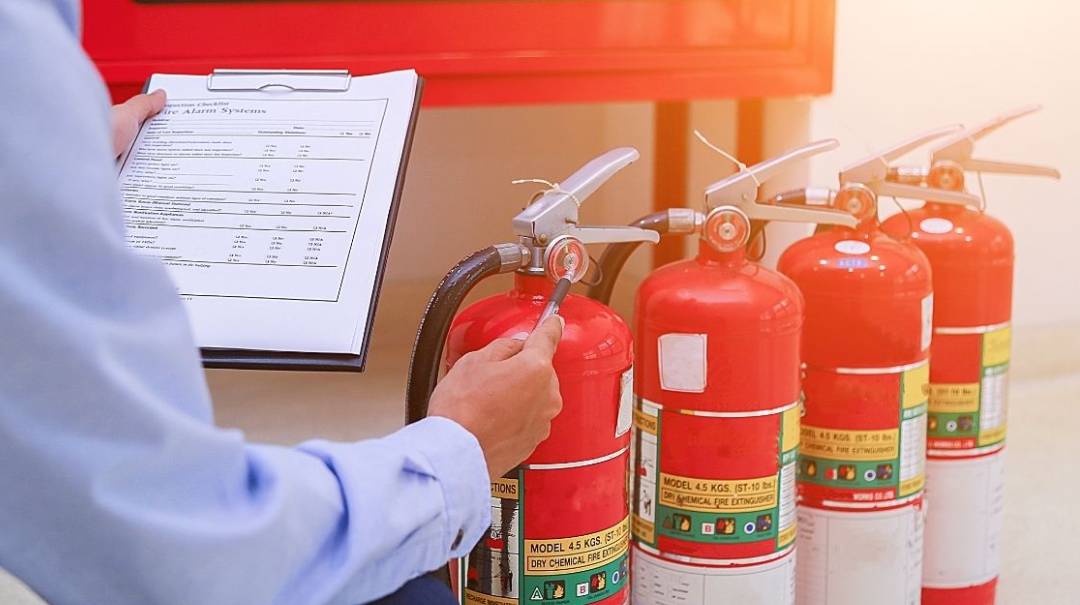Construction accidents are much more common than they should be. More than 5,300 workers die on job sites every year, and many more employees are injured in construction-related accidents.
But if you manage a job site, you don’t have to accept this. By coming up with a strong construction site safety plan, you can keep your workers safe and ensure that you get the job done without any injuries.
Table of Contents
What Is A Construction Safety Plan?
A construction safety plan is a living document that describes how you plan to keep your job site safe. A good safety plan will have lots of components, including information about:
- Safety goals
- List of people responsible for different safety objectives
- Emergency contact information
- Description of the location
- Identification of major hazards
- Plans you’ve put into place to respond to different types of emergencies
Why Is Having a Safety Plan Important?
You need to have a safety plan for your construction site for three major reasons.
- First, you want to ensure that your team can complete their jobs without getting injured. Taking the time to put together a safety plan will force you to really think about how you can make that happen.
- Additionally, when you have a clear and comprehensive safety plan in place, you’ll know exactly what you need to do in different emergency scenarios. That way, you don’t have to worry about making the correct decision in the heat of the moment.
- Finally, many companies that hire construction teams want to make sure that you can both complete the job and complete the job safely. The best way to show them that and to qualify for the project is to have a clear safety plan in place.
What’s Needed In A Construction Safety Plan?
When creating a construction safety plan, here are the main points that should be included to ensure all of your bases are covered.
Safety Representative Information
You’ll need to list information about the safety representative you’ve appointed for each team or part of your job site. That way, if an accident occurs, people will know who they need to get in touch with to make sure that it gets resolved properly.
You may also want to lay out the specific powers and responsibilities these safety representatives have.
For example, you could authorize them to spend a certain amount of money on keeping the team safe. Or you could identify which tasks they need to complete as part of their role.
Plans For Safety Inspections
It’s also important to make your plans for job site safety inspections clear in your construction site safety plan. This section should answer questions like:
- How often are you going to conduct inspections?
- What parts of your construction site get their own inspections?
- What are you going to look at during these inspections?
- How will you resolve any problems you find during these inspections?
Protective Equipment Requirements
Protective equipment is a must for every construction site as it helps workers protect themselves from all of the potential incidents that can occur while working on a live job site.
In this section of your construction safety plan, you should list the specific types of protective equipment you will require on your job site.
You could also describe your employees’ responsibilities when it comes to protective gear, such as wearing it the right way and seeking a replacement when necessary.
Processes For Accident Reports
Even when every precaution is taken, accidents can still happen. When one occurs on your construction site, you want to create a record of it so that you can learn from the experience and try to prevent it from happening again in the future.
You can use this portion of your safety plan to describe what type of information you’re going to collect in accident reports, who will put them together, and where you’re going to store the information.
Fire Protection
Fires are also something that you need to be prepared for on any job site. That’s why it’s also important to include information about how you will protect your team and your project from them in your safety plan.
Good information to have here includes:
- Who on your team is responsible for contacting emergency firefighting personnel
- The type of tools you have on-site for fire protection
- How should your employees respond in the event of a fire
- Precautions that should be taken to reduce the risk of fires
Equipment Inspections
Just as you need to inspect different parts of your job site every so often, you also need to inspect all of your equipment regularly. Your safety plan is the ideal place to describe how you’re going to do this in detail.
In this section, you’ll want to include information about:
- Your equipment inspection schedule
- Who’s responsible for conducting the inspections
- The standards for replacing a piece of equipment
- Where you’ll store equipment inspection records
Periodic Plan Review
Even after you put together your initial construction safety plan, you’re still going to want to go back and review it every so often. Doing this is an important part of ensuring that you’re not overlooking anything.
Don’t Ignore Safety Training
There’s a lot to keep in mind while putting together your construction site safety plan. But don’t let that distract you from the fact that your team needs comprehensive safety training if you really want to make your job sites as safe as possible.
AOTC can provide your team with all of the training needed to get the job done without getting hurt.
Want to learn more? Get in touch with us today, and we’ll tell you how we can help you check safety training off of your list.
